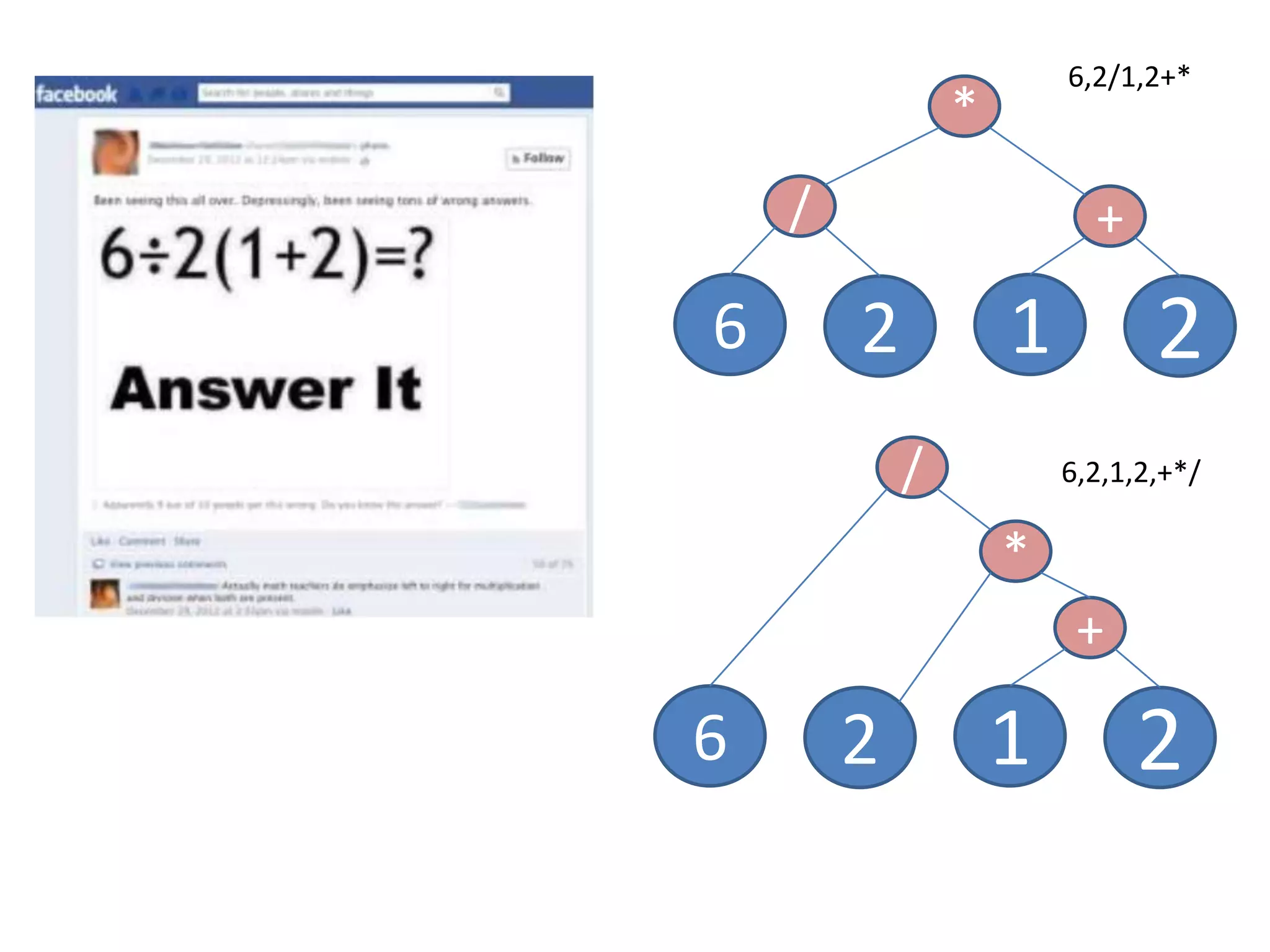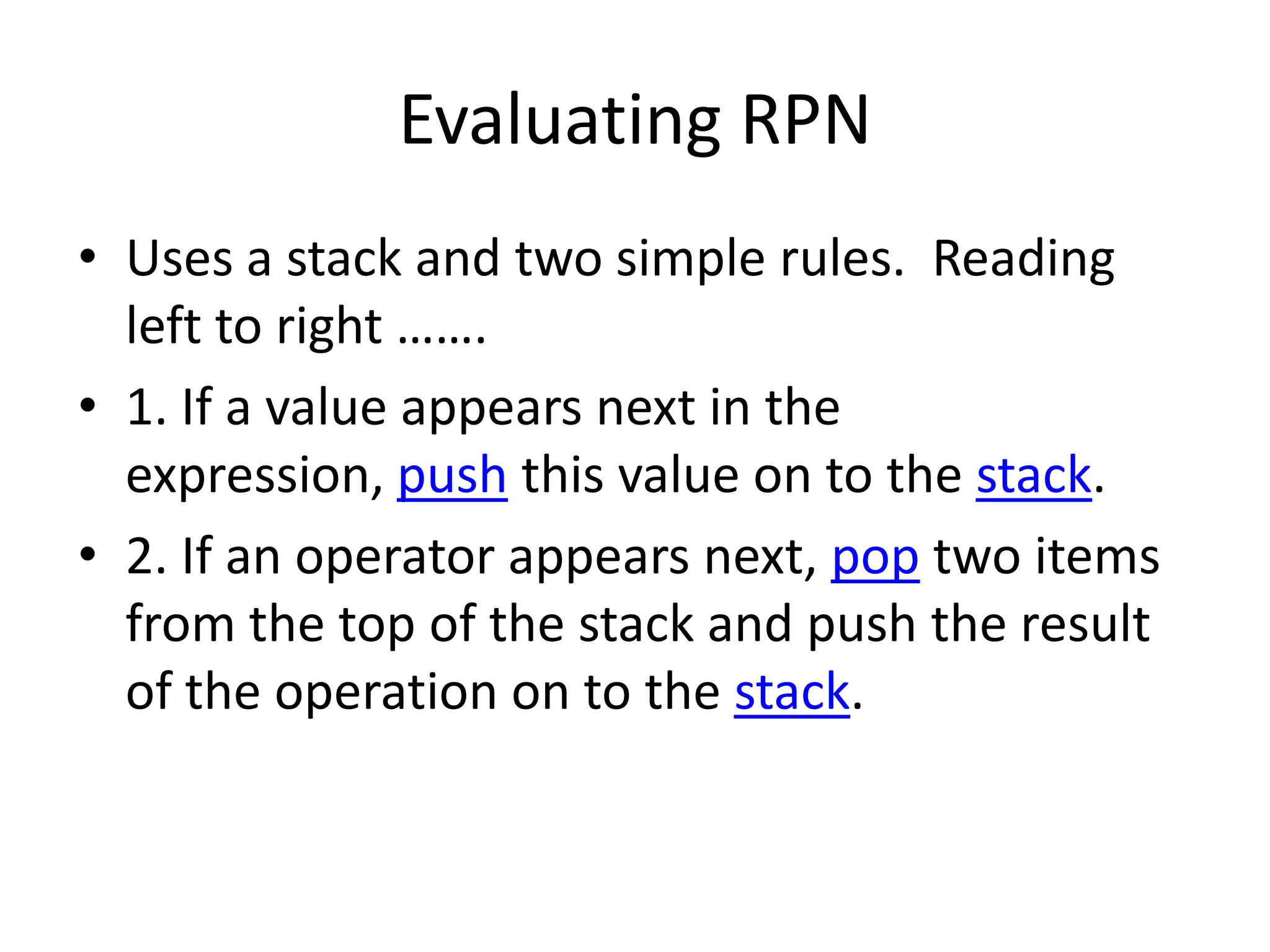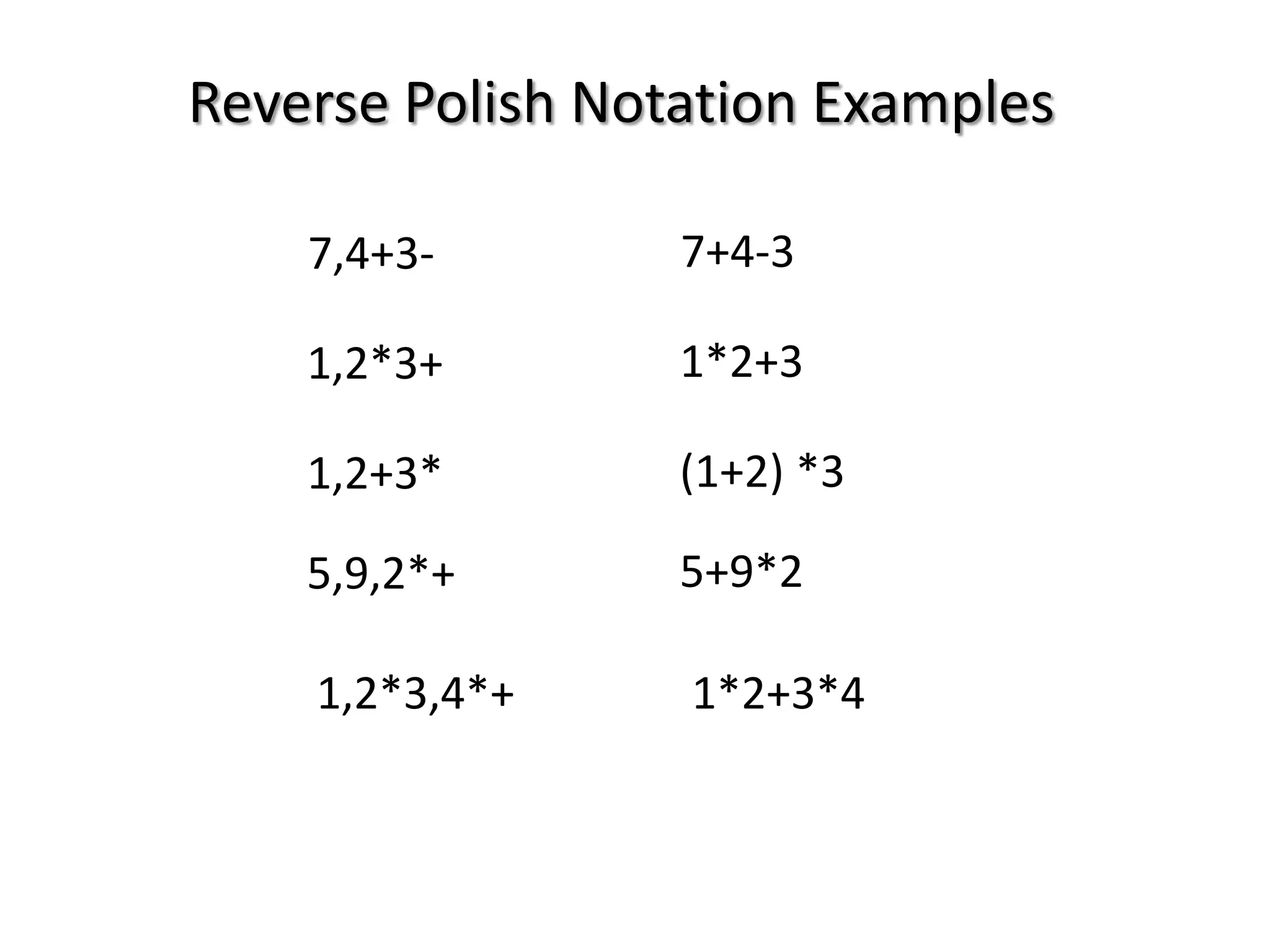Embed presentation
Downloaded 26 times







Reverse Polish notation (RPN) is a way of writing mathematical expressions without using parentheses. It uses a stack and two rules: 1) if a value appears, push it onto the stack, and 2) if an operator appears, pop two items from the stack and push the result. Examples show RPN expressions for addition, subtraction, multiplication, and division. The shunting yard algorithm can be used to convert infix notation to RPN by reading characters and pushing operands or popping operators based on their precedence.






